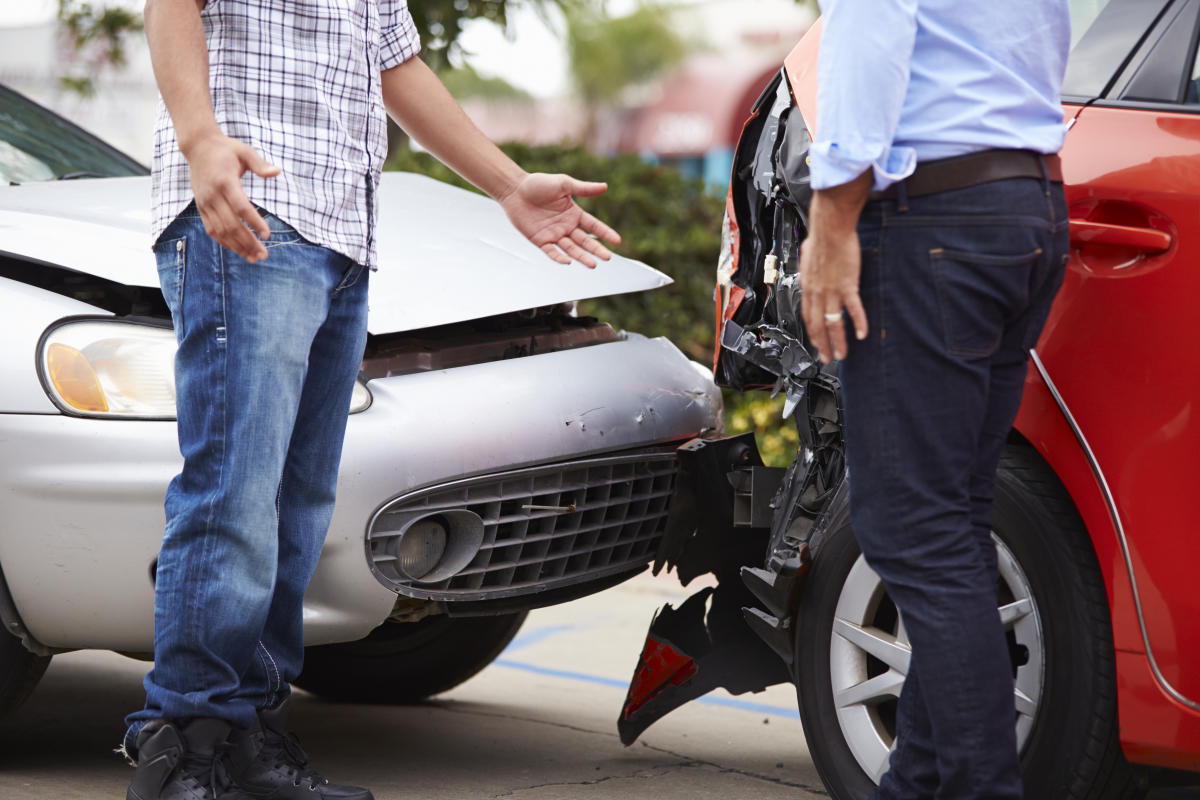What To Do if You’re in a Car Accident Without Insurance

Car accidents are an all-too-common occurrence on our roadways, affecting the lives of countless individuals each year. Navigating the aftermath of a car accident is challenging, and it becomes even more complex for those without insurance. According to a 2021 study, approximately one in eight drivers are uninsured in the United States. Being uninsured often amplifies the challenges you’ll face after a collision, whether due to financial constraints or oversight.
In this article, we’ll detail the basic steps to take immediately at the accident scene, ensuring safety and gathering crucial information. We also outline actionable guidelines for handling post-accident responsibilities, from documenting the incident to engaging with relevant parties.
For uninsured motorists looking for legal recourse, we’ll dive into the specifics of initiating an auto accident lawsuit, from understanding state-specific regulations like “no pay, no play” laws to comprehensively navigating the legal landscape.
What To Do at the Scene of the Accident
Managing a car accident without insurance presents unique challenges, which increases the need for informed and strategic actions at the scene. While insurance may provide a safety net in many situations, understanding specific steps is crucial for those without coverage. After an accident, take immediate action using the steps outlined below.
1. Prioritize safety
Ensuring safety is crucial for your well-being and any others involved after an accident. Prioritizing safety sets up subsequent actions and can help prevent further harm or complications. This may include:
Quickly evaluating the scene to identify potential hazards.
Safely moving vehicles to avoid additional accidents and clear traffic.
If injuries are present, promptly calling emergency services for medical assistance.
Depending on the situation, you may need to use your vehicle’s hazard lights to communicate with other drivers and witnesses. Prioritizing safety allows you to navigate post-accident procedures and mitigate risks.
2. Exchange information
Even if you don’t have insurance, exchanging information with the other driver(s) is crucial to facilitate communication and potential incident resolution. This process ensures all parties have the necessary details for insurance claims, legal procedures, and personal records. This typically includes:
Full names
Contact information, including phone numbers and addresses
Vehicle information, including the make, model, year, and license plate number
Driver’s license numbers
Additionally, gathering details like the other party’s insurance company name and policy number can be essential for claims and liability determination. If applicable, collect contact information from witnesses to corroborate accounts and provide additional perspectives.
3. Document the scene
Documenting the scene is important for establishing clarity, capturing critical details, and potentially aiding in legal or insurance proceedings. This documentation accurately represents the incident, minimizing discrepancies and facilitating a smoother resolution.
Basic elements to consider include:
Capturing images of vehicle positions, damages, surrounding environments, and any relevant road conditions
Noting the date, time, location, and weather conditions
Creating a simple sketch or diagram depicting the accident’s layout, vehicle positions, and key landmarks
Recording statements from witnesses, if available, to gather additional perspectives and insights
4. Report the accident
Reporting the accident to the appropriate authorities ensures legal compliance, documentation, and potential incident resolution. Depending on your jurisdiction, you may be required by law to report the accident to the police if it results in injury, death, or significant property damage. By promptly reporting, you’ll initiate a formal record of the accident, establishing a foundation for subsequent actions.
Be sure to obtain a copy of the police report, ensuring accuracy and comprehensiveness for future reference. The official report aids in insurance claims processing, liability determination, and potential compensation negotiations.
5. Avoid admitting fault
Regardless of your insurance status, avoiding admitting fault is essential to protect yourself legally and financially. Admitting fault can complicate matters, potentially leading to liability issues and increased responsibilities. By refraining from making definitive statements about fault, you’ll maintain an objective stance, allowing for a thorough investigation and determination of responsibility based on evidence and facts.
This cautious approach helps to create a fair and accurate assessment of the accident, ensuring that all parties receive equitable treatment. Additionally, avoiding premature admissions preserves options for negotiation, insurance claims, and potential legal proceedings, protecting your interests and rights.
What To Do After Leaving the Scene of the Accident
Whether recovering from injuries or navigating the complexities of being uninsured, the steps you take after leaving the scene are pivotal. The following list provides guidance for those without insurance, ensuring you have the necessary knowledge to handle the legal, financial, and personal aspects effectively.
1. Seek medical attention
While some individuals may require immediate hospitalization for visible injuries, it’s equally essential for those without apparent injuries to seek medical evaluation.
From a health perspective, underlying injuries or complications may not manifest immediately but could create long-term complications if untreated. Moreover, obtaining timely medical documentation establishes a clear record of any injuries sustained, supporting potential insurance claims or legal proceedings. Legally, documenting injuries strengthens your position, ensuring you receive appropriate compensation and effectively addressing any unforeseen health issues arising from the accident.
2. Consult with an attorney
Seeking legal advice after a car accident, especially if you lack insurance coverage, is fundamental in dealing with the challenges that may emerge. A qualified attorney can offer insights into your rights, potential liabilities, and appropriate courses of action for your specific circumstances. Additionally, an attorney can assist in communicating with insurance companies, negotiating settlements, or representing you in legal proceedings, ensuring that your rights are upheld and your best interests are served.
3. Handle insurance and repairs
If the accident is the other party’s fault and they have insurance, this process often unfolds more smoothly, as their insurance should cover damages and repairs. In such cases, communicating directly with their insurance company should bring this situation to a relatively brief conclusion.
However, complexities could arise if you’re determined to be responsible and lack insurance or if fault is contested. Repairs would likely be out of pocket, and there’s a risk of legal action from the other party for expenses you cannot afford, making it very important to seek legal advice promptly to explore potential solutions and understand your options.
4. Purchase an insurance policy
Purchasing an insurance policy post-accident, especially since you’ve previously been uninsured, is crucial. While it likely will not benefit you for this accident, insurance coverage in the future can protect against unforeseen accidents — covering repair costs, medical expenses, and potential liabilities. Maintaining continuous coverage can also boost your credibility with insurers, potentially reducing premiums over time.
How To Start an Auto Accident Lawsuit
Understanding the steps to initiate a lawsuit is crucial for those seeking legal recourse, especially for those without insurance. First, it’s essential to be aware of “no pay, no play” laws, which impact uninsured motorists in specific states.
“No pay, no play” laws restrict uninsured drivers from claiming certain damages, such as pain and suffering, even if they’re not at fault. States like Alaska, California, Iowa, Kansas, Louisiana, Michigan, New Jersey, North Dakota, Oklahoma, and Oregon have implemented variations of these laws – while the rest of the country has not. Awareness of these regulations is essential, as they can influence your approach and potential outcomes when initiating legal proceedings related to your accident.
1. Arrange a legal consultation
If you haven’t already, seeking a consultation with a seasoned attorney is essential when initiating an auto accident lawsuit as an uninsured party. Given the nuances and potential challenges of these cases, having a specialized attorney on your side will become invaluable. By explicitly targeting attorneys experienced in auto accident cases, you’ll be able to better understand your rights as an uninsured individual, potential liabilities, and avenues for compensation.
Visit our comprehensive Car Accident Lawyer Directory to discover top-tier attorneys in your metro area. Our directory gives you access to legal professionals with proven track records, substantial experience, and a significant understanding of the intricacies involved with uninsured auto accident cases.
2. File a complaint
Filing a complaint involves working closely with an attorney to initiate legal proceedings against the responsible party formally. Collaboratively, you’ll compile evidence like accident reports and medical records. Your attorney will then draft a detailed complaint outlining the accident’s specifics, injuries, damages, and compensation sought. After finalizing this document, it’s filed with the appropriate court.
3. Service of process
Once the complaint is filed, it must be served to the defendant according to legal requirements. This typically involves employing a legal process server or another approved method specified by the court. The server ensures the defendant receives the complaint, acknowledging their awareness of the legal action. Properly executing this step is essential as it initiates the defendant’s involvement in the case, setting the stage for subsequent legal proceedings – including the discovery phase, negotiation and settlement, and a trial if necessary.
Expertise.com StaffAuthor
Step into the world of Expertise.com, your go-to hub for credible insights. We don't take accuracy lightly around here. Our squad of expert reviewers, each a maestro in their field, has given the green light to every single article you'll find. From rigorous fact-checking to meticulous evaluations of service providers, we've got it all covered. So feel free to dive in and explore. The information you'll uncover has been stamped with the seal of approval by our top-notch experts.

![Airbag Injuries and Average Settlement Amounts [2023]](https://images.ctfassets.net/k00sbju4hbzq/3BBaoZsvlj0NDySlMekb5V/aae10f65f969b6faf29ccfbee387c4d4/Depositphotos_61460709_XL.jpg?fit=fill&w=384&q=75)
![Average Car Accident Settlements [2023]](https://images.ctfassets.net/k00sbju4hbzq/4BBkDDWAQT0dL8I9OSMFnt/36439fec4b6260a58e0c384f64809566/Depositphotos_335949804_XL.jpg?fit=fill&w=384&q=75)
![Can I File a Lawsuit if the Car Accident Was My Fault? [2023] DUP IMAGE](https://images.ctfassets.net/k00sbju4hbzq/KjM0u9gm0nmPN9Agv7fih/5a7d1f7c763eada5c66e5547e6e487e1/Depositphotos_341258876_XL.jpg?fit=fill&w=384&q=75)
